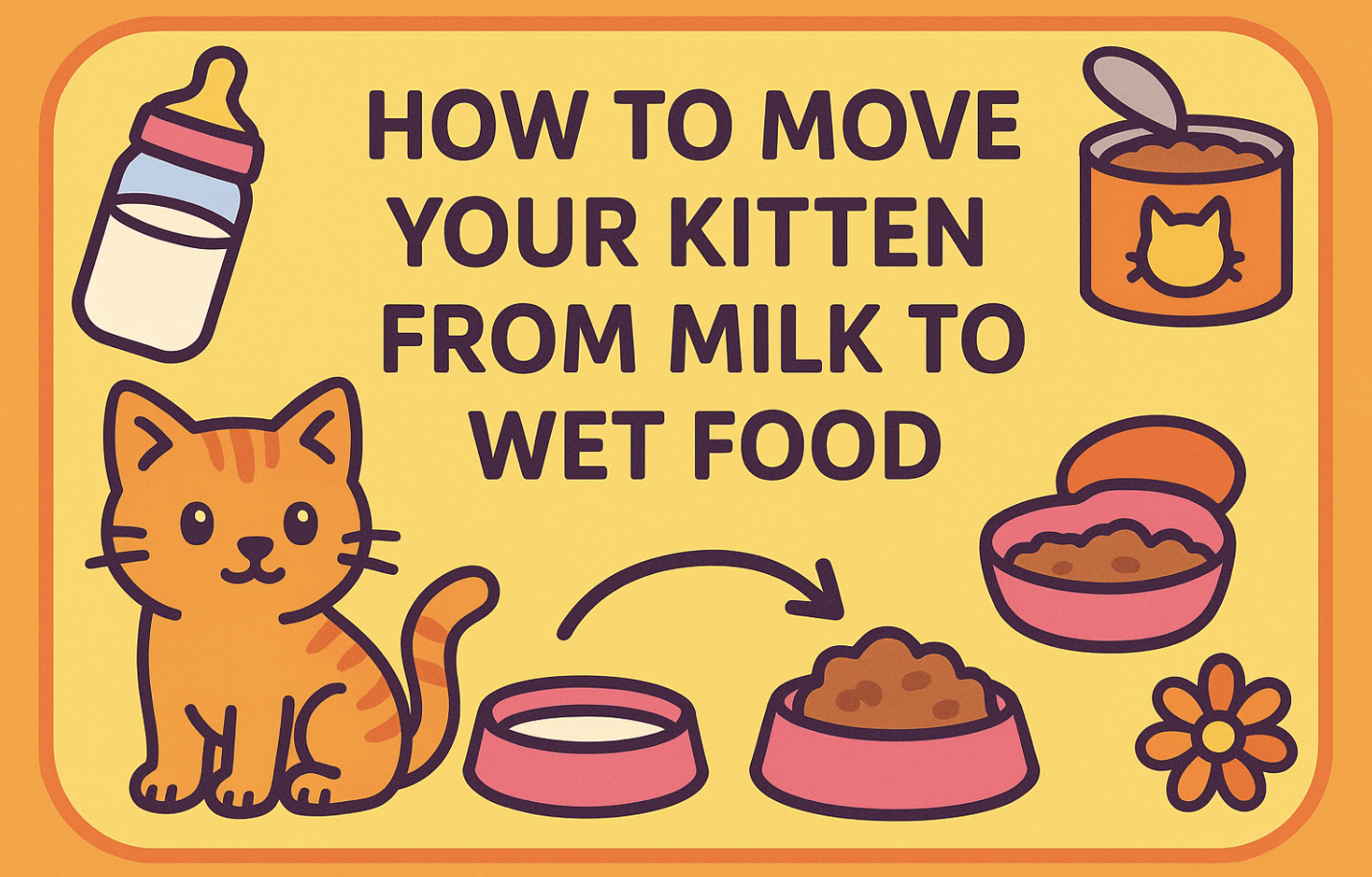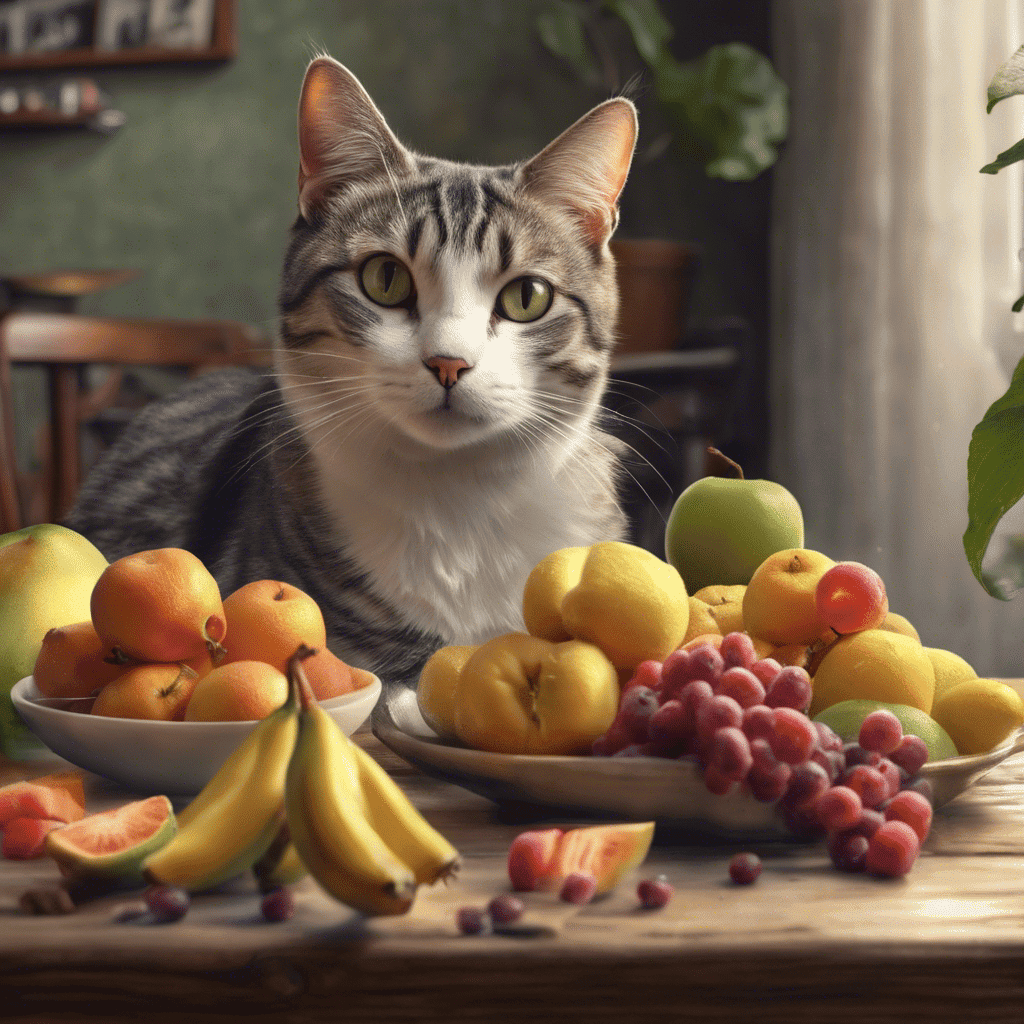
Learning how to wean a kitten off milk is an exciting milestone in their development. When they are few weeks old, kittens often show signs of readiness for this transition as their tiny teeth begin to emerge and they grow curious about solid textures. Wet food, with its soft consistency and high moisture content, is an ideal starting point for weaning. It’s gentle on their developing digestive systems while keeping them hydrated. To ease the process, try mixing wet food with kitten formula to create a porridge-like texture that’s easy for them to lap up.
With patience and care, you’ll successfully guide your kitten through this important stage, ensuring they grow into a happy, healthy companion.
When to Start Weaning a Kitten
Transitioning your kitten from milk to wet food is an exciting journey, but timing plays a critical role in ensuring their health and development. Understanding when to start the weaning process helps you set your kitten up for success.
Appropriate Age and Signs of Readiness
The best time to wean kittens typically begins around four weeks of age. At this stage, their tiny teeth start to emerge, signaling that they are ready to explore new textures. You might notice your kitten showing interest in their mother’s food or attempting to nibble on solid items. These behaviors are clear signs that they’re ready to begin the transition.
For orphaned kittens, the process may start as early as three weeks, but it’s essential to monitor their progress closely.
Younger kittens still rely heavily on milk for essential nutrients, so rushing the process can lead to nutritional deficiencies.
Always ensure they are physically and behaviorally prepared before introducing wet food.
Here’s a quick guide to recognize readiness:
-
Teething: Small teeth breaking through the gums.
-
Curiosity: Watching or pawing at their mother’s food.
-
Lapping Behavior: Attempting to lap liquids instead of suckling.
Why Timing is Important for Health and Development
Starting the weaning process at the right time ensures your kitten develops properly. Introducing solid food too early can overwhelm their immature digestive systems, leading to stomach upset or malnutrition. On the other hand, delaying weaning beyond ten weeks can create dependency on milk and make the transition more challenging.
Proper timing supports their growth, strengthens their digestive system, and encourages independence.
To help you understand the importance of timing, here’s a comparison table:
|
Age |
Nutritional Needs |
Weaning Readiness |
|---|---|---|
|
0–3 weeks |
Milk/formula only |
Not ready for solid food |
|
4–5 weeks |
Begin mixing milk with wet food |
|
|
6–8 weeks |
Gradually reduce milk intake |
Transition to mostly wet food |
|
9–10 weeks |
Wet food with occasional milk |
Fully weaned by the end of this age |
By starting at the best time to wean, you’ll ensure your kitten receives the right balance of nutrients while adapting to their new diet. Keep an eye on their behavior and appetite throughout the process. If you notice any signs of discomfort or refusal to eat, adjust the pace and consult your veterinarian for guidance.
How to Wean Kitten Off Milk: Step-by-Step Guide
Weaning kittens is an adventure that requires patience, preparation, and a sprinkle of creativity. This step-by-step guide will help you navigate the process with ease, ensuring your kitten’s transition from milk to solid food is smooth and enjoyable.
What You Need to Begin
Before diving into the weaning process, gather the essentials to set yourself up for success. Here’s what you’ll need:
-
Wet kitten food: Look for options labeled specifically for kittens. These are packed with the right balance of calories, protein, and fat to support their rapid growth. The high moisture content also keeps them hydrated.
-
Kitten formula: A milk replacer designed for kittens is crucial for the early stages of weaning. Avoid cow’s milk, as it can upset their stomachs.
-
Shallow bowls or plates: Kittens have tiny faces and short legs, so shallow dishes make it easier for them to access their food.
-
A clean feeding area: Choose a quiet, low-traffic spot where your kitten can focus on eating without distractions.
-
Paper towels or wipes: Things might get messy, especially in the beginning. Be prepared to clean up spills and smudges.
Having these items ready ensures you’re fully equipped to start the journey of how to wean kitten off milk.
Step 1: Mixing Milk with Wet Food
The first step in weaning a kitten is introducing them to the idea of solid food. Start by creating a mixture that’s familiar yet intriguing to their taste buds. Combine a small amount of wet kitten food with kitten formula to form a soft, porridge-like consistency. This blend mimics the texture of milk while introducing new flavors.
Place the mixture in a shallow bowl and gently guide your kitten toward it. Dip your finger into the food and let them lick it off. This encourages curiosity and helps them associate the new food with something positive. If they seem hesitant, don’t worry. Kittens often need a few tries before they fully embrace the change.
📕 Pro Tip: Keep the portions small to avoid overwhelming your kitten. Offer fresh food at each feeding session to maintain its appeal.
Step 2: Gradually Reducing Milk Content
Once your kitten starts lapping up the milk-food mixture with enthusiasm, it’s time to reduce the milk content. Gradually decrease the amount of formula in the mix while increasing the wet food portion. This gradual transition helps their digestive system adjust without causing discomfort.
Here’s a simple timeline to follow:
|
Week |
Milk Content |
Wet Food Content |
|---|---|---|
|
Week 1 |
75% formula |
25% wet food |
|
Week 2 |
50% formula |
50% wet food |
|
Week 3 |
25% formula |
75% wet food |
|
Week 4 |
0% formula |
100% wet food |
Stick to this schedule, but pay attention to your kitten’s behavior. If they seem reluctant or experience digestive issues, slow down the process. Every kitten is unique, so adjust the pace to suit their needs. During this stage, consistency is key. Offer the mixture at the same times each day to establish a feeding routine. This not only helps your kitten adapt but also makes your life easier as you monitor their progress.
Step 3: Introducing Pure Wet Food
Once your kitten has mastered the milk-food mixture, it’s time to take the next big step—introducing pure wet food. This stage marks their first bites of solid food without the comfort of milk, so patience and encouragement are essential. Start by selecting a high-quality kitten food specifically designed for their nutritional needs. Look for options rich in calories, protein, and fat to fuel their rapid growth. Wet kitten food is an excellent choice because its soft texture and high moisture content make it easy to eat and digest.
Brands like Purina Kitten Food offer nutritionally balanced meals that kittens find irresistible.
Place a small portion of wet food in a shallow bowl. Kittens have tiny faces, so shallow dishes make it easier for them to access their meal. Encourage them to explore the food by gently guiding them toward the bowl. If they seem hesitant, try placing a small amount on your finger and letting them lick it off. This builds trust and helps them associate the new food with a positive experience.
Keep the portions small during this stage. Overloading their bowl can overwhelm them and lead to wasted food. Offer fresh servings at each feeding session to maintain the food’s appeal. Monitor their reaction closely. Some kittens may dive right in, while others might need a few tries before fully embracing the change.
Stay consistent and supportive throughout the process.
Step 4: Establishing a Feeding Routine
Creating a consistent feeding routine is crucial for weaning kittens successfully. A structured schedule not only helps them adapt to their new diet but also ensures they receive the right amount of nutrients at the right times.
Feed your kitten small portions multiple times a day.
Start with four to five meals daily, gradually reducing the frequency as they grow older. For example:
|
Age |
Meals Per Day |
Portion Size |
|---|---|---|
|
4–6 weeks |
4–5 meals |
1–2 tablespoons per meal |
|
7–8 weeks |
3–4 meals |
2–3 tablespoons per meal |
|
9–12 weeks |
3 meals |
3–4 tablespoons per meal |
Stick to the same feeding times each day. Kittens thrive on routine, and a predictable schedule helps regulate their appetite and digestion. Choose quiet, low-traffic areas for feeding sessions to minimize distractions. This allows your kitten to focus on their meal and feel safe while eating.
Cleanliness is equally important. Wash their bowls after every meal to prevent bacteria buildup.
Fresh water should always be available alongside their food to keep them hydrated. While wet food provides moisture, kittens still need access to clean drinking water.
As your kitten adjusts to their new routine, observe their behavior and appetite. If they consistently leave food behind, reduce the portion size slightly. If they seem hungry between meals, consider increasing the portion size or adding an extra meal. Every kitten is unique, so tailor the routine to suit their needs.
Choosing the Right Wet Food for Weaning a Kitten
Choosing the right wet food plays a vital role in helping your kitten transition smoothly to eating solid food. The choices you make now will impact their growth, health, and overall happiness.
Nutritional Needs of Kittens
Kittens grow rapidly, and their nutritional needs differ significantly from adult cats. They require a diet rich in protein, fat, and essential nutrients to fuel their development. Wet kitten food is an excellent choice because it provides the hydration they need while being easy to chew and digest.
When choosing food, look for these key nutrients:
-
Protein: Kittens need at least 36% protein in their diet, ideally from animal sources like chicken or fish. Protein supports muscle growth and overall development.
-
Fat: Healthy fats provide energy and aid in brain development. Look for foods with a balanced fat content.
-
Taurine: This essential amino acid is crucial for heart and eye health. Ensure the food contains taurine, as kittens cannot produce it on their own.
-
Calcium and Phosphorus: These minerals are vital for strong bones and teeth.
Check the label to confirm the food meets the nutritional standards set by organizations like the Association of American Feed Control Officials (AAFCO). Avoid feeding dog or puppy food, as it lacks the nutrients kittens need, such as taurine.
Types of Wet Food and How to Choose the Best Option
The market offers a variety of wet food options, which can feel overwhelming. To simplify your decision, focus on these factors:
-
Texture: Wet food comes in different forms, such as pâté, chunks in gravy, or minced. For weaning kittens, pâté works best because it’s soft and easy to lap up. As they grow more comfortable, you can introduce other textures.
-
Ingredients: Opt for foods with high-quality ingredients. Look for real meat as the first ingredient and avoid artificial additives, fillers, or by-products. Foods with natural ingredients are gentler on your kitten’s stomach.
-
Brand Reputation: Trusted brands like Hill’s Science Diet, Royal Canin, and Purina offer specially formulated kitten food. These brands prioritize balanced nutrition and quality.
-
Availability: Choose a brand that’s easy to find in your area. Running out of food unexpectedly can disrupt your kitten’s routine.
Here’s a quick comparison table to help you evaluate wet food options:
|
Feature |
Pâté |
Chunks in Gravy |
Minced |
|---|---|---|---|
|
Texture |
Smooth and soft |
Small chunks in liquid |
Finely chopped pieces |
|
Best For |
Weaning kittens |
Older kittens |
Transitioning kittens |
|
Hydration Level |
High |
Very high |
Moderate |
|
Ease of Eating |
Easiest |
Moderate |
Easy |
Start with pâté during the early stages of weaning and gradually experiment with other textures as your kitten becomes more confident with eating solid food.
Common Mistakes to Avoid
Even with the best intentions, mistakes can happen when choosing kitten food. Avoid these common pitfalls to ensure your kitten gets the best start:
-
Skipping Nutritional Labels: Always read the label. Some foods marketed for kittens may lack essential nutrients. Verify that the food is labeled as “complete and balanced” for kittens.
-
Choosing Based on Price Alone: While budget-friendly options may seem appealing, they often contain fillers and lack the quality ingredients your kitten needs. Invest in high-quality food to support their health.
-
Introducing Dry Food Too Early: Dry kibble can be hard for kittens to chew and digest during the weaning process. If you want to include dry food later, soak it in water or formula to soften it.
-
Switching Foods Too Quickly: Sudden changes in diet can upset your kitten’s stomach. Gradually introduce new foods to allow their digestive system to adjust.
-
Ignoring Your Kitten’s Preferences: Kittens can be picky eaters. If they reject one type of food, try another texture or flavor. Patience and persistence will pay off.
By avoiding these mistakes, you’ll make the weaning process smoother and more enjoyable for both you and your kitten.
Common Challenges and Solutions During Weaning
Transitioning your kitten from milk to wet food can feel like a rollercoaster ride. Some kittens embrace the change with enthusiasm, while others may resist or face minor hiccups. Understanding these challenges and knowing how to address them will make the weaning process smoother for both you and your furry friend.
Rejection of Wet Food and How to Address It
Kittens can be picky eaters, especially when introduced to something unfamiliar. If your kitten turns up their tiny nose at wet food, don’t panic. This behavior is common during weaning kittens, and there are simple ways to encourage them.
-
Start Small: Offer a tiny amount of wet food mixed with kitten formula. The familiar taste of milk will make the new food less intimidating.
-
Warm It Up: Slightly warm the wet food to enhance its aroma. A stronger scent can entice your kitten to take a nibble.
-
Use Your Finger: Place a small amount of food on your finger and let your kitten lick it off. This method builds trust and curiosity.
-
Experiment with Textures: If your kitten dislikes pâté, try minced or chunks in gravy. Some kittens prefer one texture over another.
Patience is key. Kittens may need several attempts before they accept wet food. Avoid forcing them, as this can create negative associations with feeding.
Ensuring Proper Hydration During the Transition
Hydration plays a vital role in your kitten’s health, especially during weaning. Wet food provides moisture, but kittens still need access to fresh water at all times. Dehydration can lead to serious health issues, so keeping an eye on their water intake is essential.
Here’s how to ensure your kitten stays hydrated:
-
Provide Fresh Water Daily: Use a shallow bowl that’s easy for your kitten to access. Replace the water daily to keep it clean and appealing.
-
Monitor Drinking Habits: Observe how often your kitten drinks. If they seem uninterested in water, try placing a few drops of kitten formula in the bowl to encourage lapping.
-
Add Water to Wet Food: For extra hydration, mix a small amount of water into their wet food. This creates a softer texture and boosts their fluid intake.
-
Use a Fountain: Some kittens find running water more enticing. A pet water fountain can make drinking fun and engaging.
Hydration is especially important if your kitten experiences digestive issues during weaning. Keep their water bowl in a quiet, accessible spot to encourage regular drinking.
Managing Digestive Upsets and When to Consult a Vet
Digestive upsets, such as diarrhea or constipation, can occur as your kitten adjusts to solid food. These issues are usually mild and temporary, but they require attention to ensure your kitten stays healthy.
Common Causes of Digestive Upsets:
-
Sudden Diet Changes: Introducing new food too quickly can overwhelm their digestive system.
-
Overfeeding: Large portions can lead to stomach discomfort.
-
Low-Quality Food: Foods with fillers or artificial additives may upset their stomach.
Solutions to Manage Digestive Upsets:
-
Adjust the Transition Pace: Slow down the weaning process. Gradually increase the wet food content while reducing milk over several weeks.
-
Smaller Portions: Feed smaller, more frequent meals to ease digestion.
-
Choose High-Quality Food: Opt for wet food specifically formulated for kittens. These foods meet their nutritional needs and are gentle on their stomachs.
If digestive issues persist for more than 48 hours or if your kitten shows signs of dehydration, lethargy, or loss of appetite, consult a veterinarian immediately. Early intervention ensures your kitten stays on track for healthy growth.
|
Symptom |
Possible Cause |
Action to Take |
|---|---|---|
|
Diarrhea |
Sudden diet change |
Slow down the transition |
|
Constipation |
Low water intake |
Add water to wet food |
|
Vomiting |
Overfeeding |
Reduce portion size |
|
Lethargy |
Dehydration |
Consult a vet immediately |
Weaning kittens can be challenging, but with patience and the right approach, you’ll overcome these hurdles. Remember, every kitten is unique. Tailor your methods to suit their needs, and don’t hesitate to seek professional advice when necessary.
Weaning your kitten from milk to wet food is a rewarding journey that strengthens your bond with your furry friend. This process takes patience and consistency, but the results are worth it. You’ll watch your kitten grow healthier and more independent with every step. Stick to the outlined steps, and you’ll make the transition smooth and stress-free.
Always remember, no two kittens are the same. Pay attention to their unique needs and progress. If challenges arise, consult your vet for tailored advice. Your care and dedication will set your kitten up for a happy, thriving life.

In her previous life, Lisa traveled extensively, both for work and leisure. After the pandemic struck, Lisa locked up her luggage and adopted a cat ever since.
Lisa is now an avid cat lover, she devotes most of her free time serving as butler to her adorable feline at home. When she is not with her cat, she can be seen using her phone sourcing for the latest cat supplies online.


